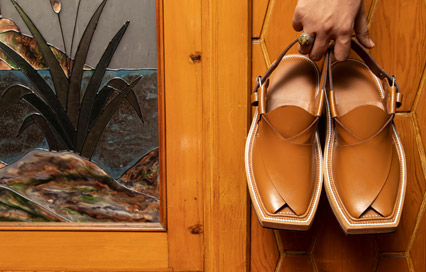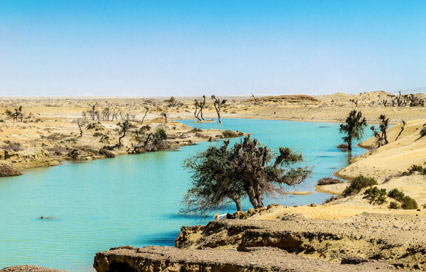Passu Cones and Glacier Viewpoints: Ultimate Photography Spots on the KKH
September 12, 2025
The Karakoram Highway (KKH) winds through some of the most spectacular mountain scenery on earth, connecting Pakistan to China across the mighty Karakoram Range. Among its many natural wonders, the Passu Cones stand as perhaps the most iconic and photographed landmarks. These jagged cathedral-like spires, also known as "Passu Cathedral," rise dramatically against the sky, creating a landscape that seems almost too perfect to be real.
For photographers and nature enthusiasts, the various viewpoints offering vistas of the Passu Cones represent some of the most rewarding destinations along the entire KKH journey. This guide will help you discover the best locations, optimal timing, and practical tips to capture these magnificent formations in all their glory.

Passu Cones and Glacier Viewpoints
Understanding the Passu Cones: Nature's Gothic Cathedral
The Passu Cones are a series of sharp, serrated mountain peaks located near Passu village in Upper Hunza, Gilgit-Baltistan, northern Pakistan. Geologically, they're part of the Karakoram Range, formed through millions of years of tectonic forces pushing the earth's crust upward, followed by erosion that sculpted their distinctive shapes.
Rising to around 6,106 meters (20,033 feet), these granite and metamorphic formations earned their ‘Cathedral’ nickname for their sharp spires that resemble Gothic architecture. Local Wakhi people call them "Tupopdan," meaning "sun-scorched mountains," as their peaks catch the first and last rays of sunlight, often glowing orange-red during sunrise and sunset.
What makes the Passu Cones particularly photogenic is their almost perfect symmetrical arrangement when viewed from certain angles along the KKH, creating one of nature's most perfectly composed landscapes.
- The main formation consists of approximately 6-8 major peaks
- The cones are composed primarily of sedimentary rock
- Their distinctive shape results from a combination of uplift and erosion
- Local folklore attributes spiritual significance to these peaks
Prime Viewpoints: Where to Capture the Perfect Shot
Several viewpoints along the KKH offer excellent vantages of the Passu Cones, each with its own unique perspective and photographic advantages:
The KKH Signature Viewpoint: Located approximately 3km south of Passu village, this popular stopping point offers the classic, straight-on view of the Cones that appears on Pakistani currency and countless postcards. A small roadside pull-off provides the classic, straight-on view of the Cones, making it one of the most photographed spots along the KKH. This viewpoint captures the Cones in perfect symmetry with the Hunza River in the foreground.
Glacier Breeze Café Viewpoint: This roadside café about 1.5km south of Passu village offers not only refreshments but also a slightly elevated perspective of the Cones. The café's terrace provides comfortable seating to enjoy the view while sipping local tea. Many photographers consider this the optimal distance for capturing the full majesty of the formation.
Passu Bridge Viewpoint: For those seeking to incorporate the glacial waters of the Hunza River into their composition, the suspension bridge near Passu village offers unique framing opportunities. The bridge itself can also serve as a foreground element in wider landscape shots.
Hussein Abad Viewpoint: Located further south, this less-frequented viewpoint offers a different angle that captures the Cones alongside Passu Glacier. The additional distance provides a better perspective of the Cones' relationship to surrounding peaks.
- Visit multiple viewpoints for varied compositions
- Early morning often offers clearest visibility
- Bring a wide-angle lens (16-35mm) for landscape shots
- A telephoto lens (70-200mm) helps capture details of the spires

Passu Bridge Viewpoint
Optimal Timing: Light and Seasons at Passu Cones Viewpoint
The Passu Cones transform dramatically with changing light conditions and seasons, offering photographers vastly different shooting opportunities throughout the year:
Golden Hours: As with most landscape photography, the hour after sunrise and before sunset creates magical lighting conditions. The Cones catch the early and late sunlight in a way that accentuates their ridges and valleys. During summer months, this means very early mornings (around 5:00-6:00 AM) or evenings (7:00-8:00 PM).
Weather Considerations: Clear days provide the sharpest visibility, but partial cloud cover can add drama and dimension to photographs. After rainfall or snowfall, the atmosphere often clears temporarily, creating pristine conditions for photography.
Seasonal Variations:
- Spring (April-May): Contrast between snow-capped peaks and green valleys
- Summer (June-August): Easiest road access, though midday haze can occasionally reduce visibility
- Autumn (September-October): Golden foliage in the foreground adds warmth
- Winter (November-March): Most dramatic with heavy snow but challenging access
The Passu Cones viewpoint is accessible year-round, though winter brings potential road closures due to snow. Summer offers the most reliable access but also brings more tourists. The shoulder seasons of late spring and early autumn often provide the best combination of good weather, dramatic landscapes, and fewer crowds.
Season | Photography Advantages | Challenges |
Spring | Snow + greenery contrast | Unpredictable weather |
Summer | Best accessibility | More tourists, harsh midday light |
Autumn | Golden valley colors | Shorter days |
Winter | Dramatic snow scenes | Difficult access, very cold |

Batura Glacier Viewpoint
Beyond the Cones: Nearby Glaciers and Viewpoints
While the Passu Cones rightfully command attention, the area offers several additional natural wonders worth exploring with your camera:
Passu Glacier Viewpoint: A short 2km trek from Passu village leads to viewpoints overlooking this massive glacier. The hike takes approximately 1-1.5 hours each way over moderate terrain. The contrast between the white ice, dark moraine, and blue sky creates compelling compositional opportunities.
Batura Glacier Viewpoint: One of the world's longest non-polar glaciers, Batura can be viewed from several points along a jeep track that begins near Passu village. The most accessible viewpoint requires about a 45-minute walk from where vehicles must stop.
Borit Lake: This turquoise alpine lake located about 10km from Passu offers reflective views of surrounding mountains on calm days. Morning visits typically provide the calmest water surfaces for reflection photography.
Hussaini Suspension Bridge: Often called one of the world's most dangerous bridges, this narrow suspension bridge spans the Hunza River. Photographing brave crossers against the backdrop of mountains creates unique human-in-landscape compositions.
- Carry sufficient memory cards and spare batteries
- A sturdy tripod is essential for low-light shooting
- Polarizing filters help manage reflections and enhance sky colors
- Consider drone photography if permitted (check local regulations)
Practical Information: Accessing Passu Cones Viewpoints
Reaching the Passu area requires some planning but rewards photographers with unforgettable shooting opportunities:
Transportation Options:
- From Islamabad: Flights to Gilgit followed by 3-4 hour drive
- From Gilgit: Hire a private vehicle or take public vans (3-4 hours)
- From Hunza/Karimabad: 1-1.5 hours by car or public transport
Accommodation: While Passu village offers basic guesthouses, many photographers choose to stay in Karimabad (Hunza) where more accommodation options exist, making day trips to the Passu Cones. In Passu itself, Glacier Breeze Hotel and Passu Ambassador Hotel provide comfortable rooms with views.
Essential Gear:
- Layers of clothing (temperatures vary widely through the day)
- Sunglasses and sunscreen (high-altitude sun intensity)
- Water and snacks (limited options along viewpoints)
- Sturdy footwear for viewpoint trails
- Cash (limited ATM access in the region)
When is the best time of day to photograph the Passu Cones?
Golden hour lighting provides the most dramatic photography opportunities at Passu Cones. Early morning (30 minutes before sunrise until about an hour after) typically offers the clearest air quality as wind patterns haven't yet stirred up dust, creating crispness in distant mountain details. The early light casts a warm glow on the eastern faces of the peaks. Late afternoon to sunset (about 90 minutes before sunset) bathes the western faces in golden light, creating dramatic shadows in the ridges. Midday photography is challenging due to harsh overhead light, though storm clouds or unusual atmospheric conditions can sometimes create compelling midday shooting opportunities. If you're staying multiple days, prioritize sunrise sessions as afternoon winds can sometimes bring haze that reduces visibility.
How difficult is it to access the various Passu Cones viewpoints?
Most primary viewpoints along the Karakoram Highway require minimal physical effort, making them accessible to photographers of all fitness levels. The KKH Signature Viewpoint and Glacier Breeze Café are directly adjacent to the highway with designated parking areas and require only a short walk from your vehicle. For more unique angles, moderate hiking is required. The Passu Glacier viewpoint involves a 2-3 hour roundtrip hike on established but sometimes steep trails. The Borit Lake vantage points require either a short jeep ride from Passu village followed by a 15-minute walk or a 2-hour trek. During winter months (November-March), some viewpoints may become challenging or inaccessible due to snow and ice, particularly those requiring hiking beyond the main highway.
What photography equipment should I bring specifically for Passu Cones?
A versatile camera kit optimized for landscape photography will serve you best at Passu Cones. Essential equipment includes: a wide-angle lens (16-35mm equivalent) for capturing the full grandeur of the mountains; a medium telephoto (70-200mm equivalent) for compressing the scene and isolating specific peaks; a solid tripod for low-light shooting during golden hours; polarizing filters to manage reflections and enhance sky color; graduated neutral density filters to balance bright skies with darker foregrounds; and extra batteries (cold temperatures drain them quickly). A remote shutter release helps prevent camera shake during long exposures. While not essential, a drone provides unique perspectives if regulations permit (always check current rules). For serious photographers, a panoramic head for the tripod allows creating high-resolution multi-image panoramas that capture the full majesty of the landscape.
The Passu Cones represent one of nature's most perfect compositions – jagged peaks perfectly arranged like a crown against the sky. For photographers willing to make the journey along the legendary Karakoram Highway, these remarkable formations offer endless creative possibilities. Whether shrouded in morning mist, glowing with sunset light, or standing stark against clear blue skies, the Passu Cathedral continues to inspire and amaze visitors to this remote corner of Pakistan's spectacular northern territories.
Planning Your Journey to Passu Cones: Travel Documentation Guide
Before embarking on your photographic expedition to the magnificent Passu Cones viewpoint, ensuring your travel documentation is properly arranged will create a smooth experience. Pakistan requires visitors from most countries to obtain appropriate entry permits before arrival. While the dramatic mountain vistas await, addressing the practical aspects of international travel is essential first.
For convenience and efficiency, many travelers choose to secure their Pakistani visa through specialized services that streamline the application process. After submitting your application, you can easily monitor your application progress online, allowing you to focus on planning your photography expedition along the Karakoram Highway rather than paperwork concerns.
The dramatic cathedral-like spires of the Passu Cones attract photographers and adventurers from around the world. Before finalizing your itinerary for this remote region, ensure you understand the visa processing fees based on your nationality and travel needs. Processing typically takes 7-14 business days for Pakistan visas, so factor this timeframe into your travel planning.
Once your documentation is secured and your adventure to northern Pakistan is confirmed, you can complete your visa requirements and turn your attention to the extraordinary photographic opportunities that await – from capturing the perfect golden hour light on the jagged spires to exploring the nearby glaciers and viewpoints surrounding the iconic Passu Cones.
Related Articles:
- 10 Must-See Attractions When You Visit Hunza Valley
- 5 Places In Northern Pakistan To Add To Your Travel Itinerary
- Hunza To Skardu: Exploring Pakistan's Northern Paradise
- 9 Famous Places In Skardu That Tourists Must Visit
- Karachi To Hunza: Planning Your Adventure
- Karachi To Skardu Distance: A Journey Through Pakistan's Scenic Wonders
- Discover The Most Beautiful Valley In Pakistan: Heaven On Earth Awaits
Tags




